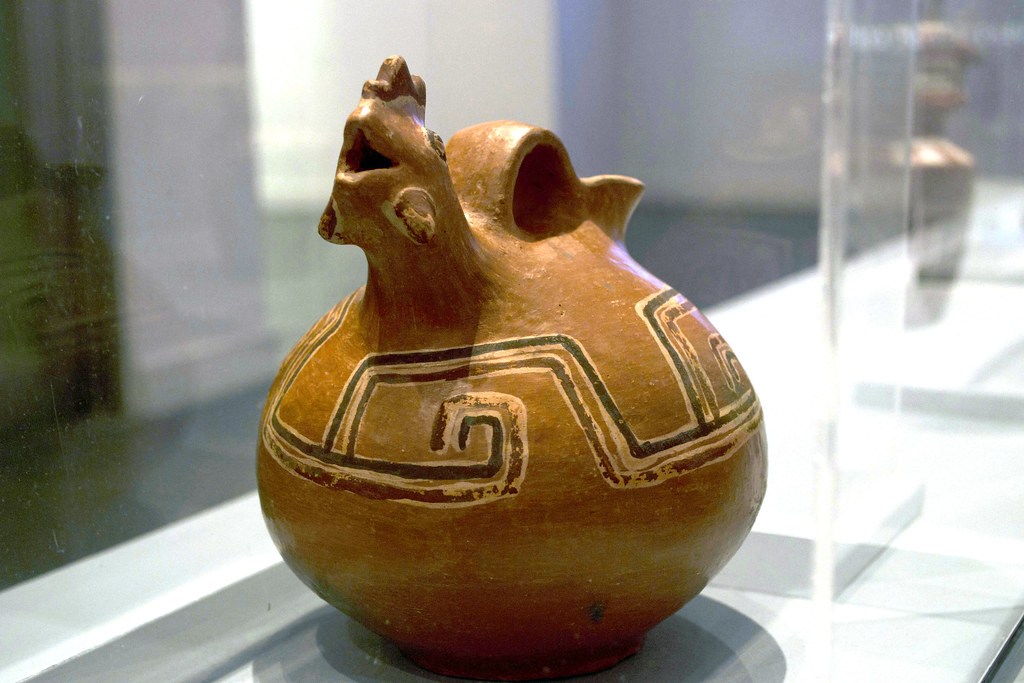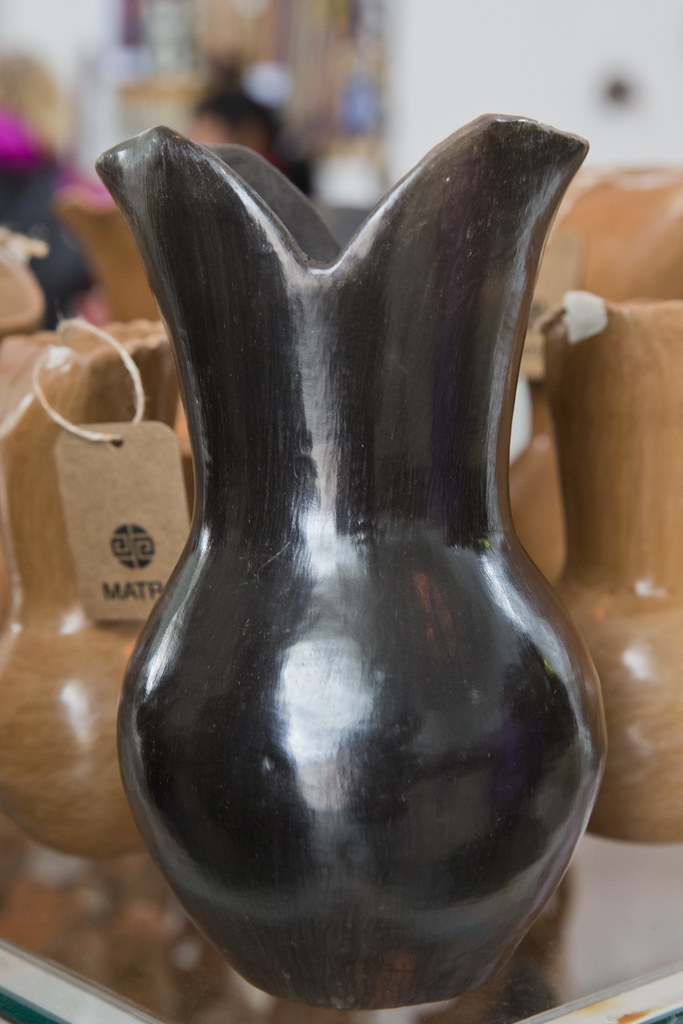Description
En Argentina, la cerámica ha tenido un importante desarrollo, y se ha vuelto la tercera rama artesanal con mayor número de artistas. Sus orígenes se remontan a una rica tradición prehispánica que se manifiesta en un copioso patrimonio arqueológico. En el actual territorio argentino conviven el patrimonio vivo de la alfarería indígena, la cerámica caracterizada como criolla o mestiza y la cerámica inspirada en las culturas indígenas, pasadas o presentes.
Entre las cerámicas indígenas que actualmente se reconocen como patrimonio inmaterial está el petyngua que es una pipa de ñau o pipa de barro de uso espiritual utilizada por los ancianos y ancianas de las comunidades Mbyá Guaraní de la provincia de Misiones[1] . Otra alfarería representativa es no’ xoná o trabajo en barro de las comunidades Moqoit de la Provincia de Chaco[2], que resultan hermosas vasijas bruñidas y ahumadas que son piezas únicas.
Las comunidades Chané Guaraní denominan tobanti al color blanco de las vasijas con decoraciones y patrones decorativos que los distinguen. En ssta tarea femenina la referencia a animales de corral como a detalles que parecen aludir a humanos como pecheros y adornos son frecuentes (Bovisio, 2010). En la actualidad solo se realizan estas vasijas en la comunidad Tutiati Chané de Campo Durán, Salta. El poblado alfarero más destacado de Argentina es Casira. Ubicada en la frontera con Bolivia, la localidad se encuentra a 3637 metros de altitud en un área rica en arcillas denominadas pirca y puca. La comunidad indígena Kolla de Casira provee de ollas a toda la región desde tiempos antiguos (Amarilla, 2020)
Los cuatro casos citados son los legados más destacados, pero muchos pueblos están en proceso de reconocimiento de su patrimonio inmaterial alfarero. Como ejemplo están las producciones de los pueblos Qom, Wich`í, Ranquel, Huarpe, Diaguita Calchaquí y Mapuche, así como otros cuyas técnicas y procedimientos tienen el doble carácter de ser saberes tradicionales a la vez de elementos de identidad. Una cerámica de mucha calidad es la de la zona de la Pampa de Achala, en el centro mediterráneo del país. Se la caracterizaba como criolla o mestiza. La cerámica negra de Traslasierra mantiene técnicas transmitidas de generación en generación y las finas terminaciones de esta cerámica se logran con un impecable bruñido y el ahumado de las piezas a través de manejos sustentables (Gleyzer, 1965). Entre las familias más representativas de la cerámica negra de Traslasiera está la del maestro artesano Atilio López.
[1] Integra el Relevamiento de manifestaciones del patrimonio cultural inmaterial en Argentina publicado por la Dirección Nacional de Bienes y Sitios Culturales del Ministerio de Cultura de la Nación.
[2] Integra el relevamiento de la Dirección de Patrimonio Cultural de la Provincia del Chaco.
english
Ceramics
In Argentina, ceramics has experienced significant development, making it the third branch of craftsmanship with the highest number of artists. Ceramics traces its origins to a rich pre-Hispanic tradition, evident in an abundant archaeological heritage. The living legacy of indigenous pottery, ceramics characterised as criollo or mestizo, and ceramics inspired by indigenous cultures—whether from the past or present—all coexist within the Argentine territory. It can be asserted that ceramics holds a prominent position as the third major craft, boasting a substantial number of practitioners and drawing inspiration from diverse cultural influences.
Among the indigenous ceramics currently recognised as intangible heritage is the petyngua, a pipe made of ñau or clay used for spiritual practices by the elders of the Mbyá Guarani communities in the province of Misiones. Another representative form of pottery is no’ xoná, or clay work, from the Moqoit communities in the Province of Chaco. This results in beautiful burnished and smoked vessels that are unique, one-of-a-kind pieces.
The Chane Guarani communities call tobanti the white colour of the vessels with decorations and decorative patterns that distinguish them. In this female task, references to farmyard animals and details that seem to allude to humans, such as breastplates and ornaments, are frequent (Bovisio, 2010). Currently, these vessels are only made in the Tutiati Chané community of Campo Duran, in the Province of Salta. The most prominent pottery settlement in Argentina is Casira. Located on the Bolivian border, the town lies at an altitude of 3637 metres in an area rich in clays that are called pirca and puca. The Kolla indigenous community of Casira has been supplying pots to the entire region since ancient times (Amarilla, 2020).
The four above-mentioned cases are the most outstanding legacies, but many communities are in the process of recognising their intangible pottery heritage. Examples are the productions of the Qom, Wich`í, Ranquel, Huarpe, Diaguita Calchaqui, and Mapuche peoples, as well as others whose techniques and procedures have the dual character of being both traditional knowledge and elements of identity. A pottery of great quality is that of the Pampa de Achala area, in the landlocked centre of the country. It has been characterised as Creole or mestizo. The black pottery of Traslasierra preserves techniques handed down from generation to generation and the fine finishes of this pottery are achieved by impeccable burnishing and smoking of the pieces through sustainable methods (Gleyzer, 1965). Among the most representative families of Traslasiera black pottery is that of the master craftsman Atilio Lopez.



Reviews
There are no reviews yet.